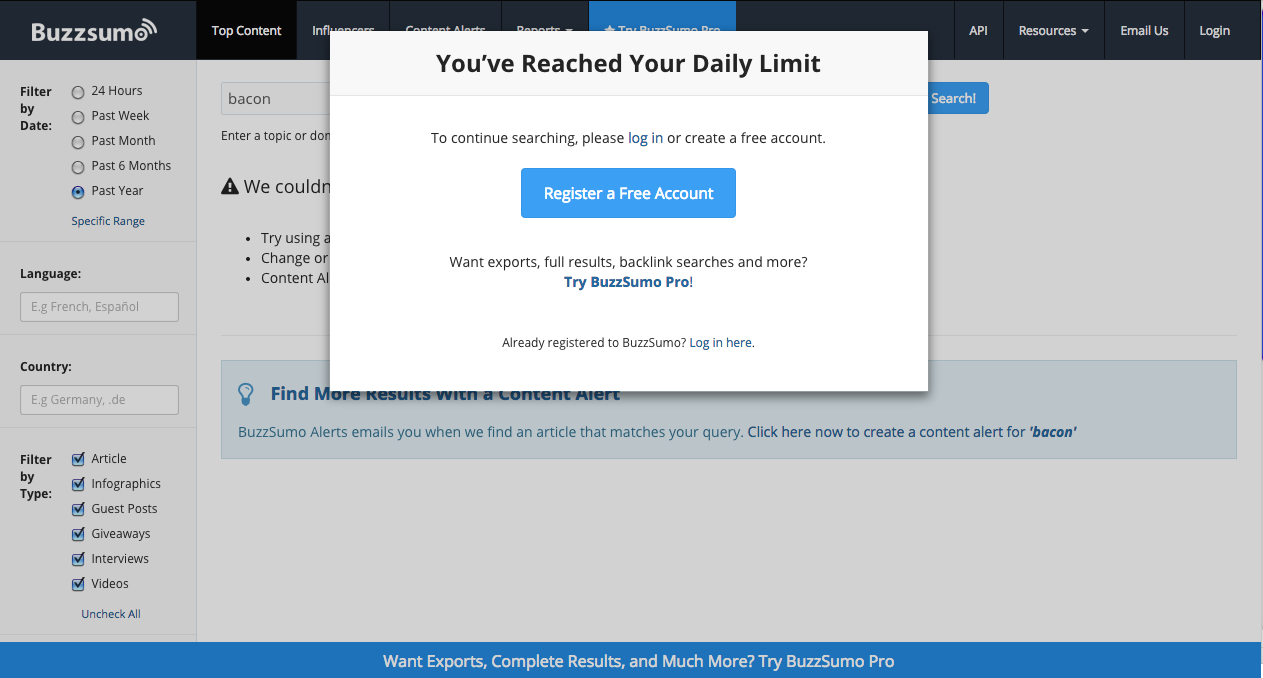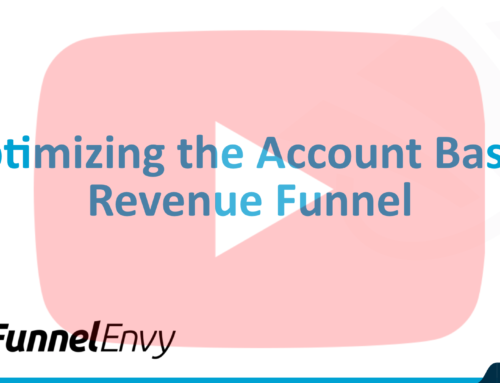Getting a visitor’s attention, impressing them with what you have to say, and convincing them to open their wallets right away is a tall order to ask from even the best-designed website.
Unfortunately, that’s the kind of pressure most businesses are putting on their websites.
Without an effective online lead generation system in place, many online business owners are left scratching their heads. They’re left with unanswered questions like:
Why aren’t the leads and customers pouring in?
Was this whole website thing a waste of time and money?
Things don’t have to be this way—if you commit to building an online lead generation system.

Photo credit: James Willamor via Compfight cc
Not Having a System to Generate Leads Forces Business to Split Their Focus
The vast majority—around 95%–of first-time visitors won’t buy from you when they land on your website. “Impulse buys” like $5 t-shirts aside, it usually takes multiple encounters to close the sale.
Many businesses don’t have a plan in place to build relationships with this 95%. They don’t have a systematic way to turn visitors into leads, nurture them, and convert them into happy customers.
This forces a lot of business owner to split their time between “getting customers” and “running their business.”
There are only so many hours in the day. It’s easy to get stretched thin when you constantly feel the pressure to drum up new business. You end up neglecting customers. The customer experience worsens, churn rates go up, and profits go down.
You need something that will continue to attract new leads while you’re operating other aspects of your business. Something that works whether you’re awake or asleep. Something you can scale.
Online Lead Generation Doesn’t Have to be Overwhelming
The idea of building an online lead generation system can seem intimidating or downright overwhelming. Especially if you’re starting fresh.
It isn’t quite as easy as just throwing up a website with a contact form and waiting for the leads to pour in. But it doesn’t have to be complicated either.
Bottom line: if you’re willing to invest some time and effort up front, you can turn lead generation from an endless scramble to a system that works for you 24/7.
So let’s unpack the process to make it easier to implement. Here are five steps to get an online lead generation system up and running—even if you’re starting from scratch:
Step 1. Optimize Your Website to Get (and Keep) Visitors’ Attention
You already know most first-time visitors to your website won’t buy from you.
That’s okay. There isn’t any pressure to hard sell and get visitors to become customers right now… as long as you have a process in place to attract leads and get them to identify themselves.
But how do you get visitors to become leads in the first place?
By getting their attention from the moment they land on your website.
You only have a few seconds to do this. If you don’t capitalize during that timeframe, visitors will just hit the “back” button on their web browsers and end up forgetting about you.
That’s why it’s so important to do everything in your power to: 1) get the right people’s attention, and 2) convey how you can help them. That’s the first step to getting visitors to “raise their hands” digitally and identify themselves as leads.
Here are just a few ways you can optimize your website to get people’s attention (and get them open to the possibility of hearing more from you):
- Give users multiple ways to reach out to you (and buy)
- Incorporate trust signals like return policies, trust seals, and social media accounts
- Use social proof (case studies, the number of customers you’ve helped, etc.)
- Define your value proposition and present it right away
- Test different versions of headlines to see which version converts best
- Make the “next step” you want users to take clear and easy to carry out
Step 2. Entice Visitors to Become Leads with Valuable Free Content
Getting visitors’ attention online is just the first step in building an effective lead generation system.
Now’s the time to turn momentary sparks of interest into budding (and profitable) business relationships.
How do you do it?
Enticing interested visitors to identify themselves as leads by offering them free value.
Even if visitors are interested in your business, it usually takes the prospect of getting something more to convince them to take the “next step”—whether it’s offering their email address, scheduling a product demo, or picking up the phone. No one is eager to offer personal information without knowing they’ll get something in return.
That’s why you can create a “lead magnet,” a valuable piece of content that solves one of your target customers’ problems, and give it away in exchange for an email address or other personal information.
What your lead magnet looks like will depend on your niche and target customers (it’s definitely something worth testing). But here a few options you could try:
- EBooks
- Audio recordings
- Video programs
- Trial or entry-level versions of software
- Free consulting session
- Coupons to discount the price on purchases
Recently, one company caught my eye for doing this very well. BuzzSumo, an online tool that lets you see which content is being widely shared, lets anyone use their tool for free, but they limit them to a few searches a day. You can use it more if you register for an account by providing your email address.

Image credit: BuzzSumo
The free sample of the BuzzSumo tool showed me how valuable it was. I wanted to perform more searches, so I gave them my email address. Their lead magnet worked because it got me to identify myself as a lead.
Step 3. Use Tools to Automate the Lead Nurturing Process
Once you’ve wowed first-time visitors and enticed them to become leads, it’s time to work them through your sales funnel until they’re happy customers.
This used to take an enormous amount of time or energy. Sales teams had to call leads one at a time to follow up, send them cards in the mail, and so on. Manual follow up took a lot of focus away from bringing in new business.
Now, tools like email software and CRM platforms have changed that. You can automate much of the lead nurturing process, replicating the one-to-one communication of manual sales calls without the huge time sink.
Once you set these tools up, they keep working whenever a new lead comes in. It isn’t a “set it and forget it” model because you’ll want to refine and expand this process (more on that in a second). But it’s a great way to free up time to develop products and serve existing customers.
Here are just a few ways you can use technology to automate the lead nurturing process:
- Email autoresponders: tools like AWeber and MailChimp allow you to send a series of automated emails—called drip email campaigns—to new and old leads alike. Once you load the sequence with content and set the time intervals, it emails people without any effort on your part.
- Product demos
- Free trials
It will take some leads longer than others to become buyers, but the end goal is the same: escalate the relationship and get them to commit to larger and larger offerings. Automated lead nurturing can help you do that.
Step 4. Test and Gather Feedback to Refine Your System
Now you have more than most businesses have—an automated system to attract, capture, and nurture leads. But you can refine and scale your system to reach even more people. You can make more money and free up more time in the process.
That’s why testing different elements of your lead generation system is such an important part of any winning conversion optimization strategy. These benefits pay off for months and years to come. And they only compound as you optimize multiple elements.
Here are a few ways you can scale and refine your lead generation system:
- Split-test different elements on your website to see which version converts best
- Segment your email list and test different lead nurturing approaches depending on the leads’ demographics, browsing activity, and other factors
- Generate customer feedback about your lead magnet, emails, product demos, or free consultations
The coolest thing about this step: you can automate much of the testing and refining process as well. You can split-test, segment your email list, and get feedback via online tools while you focus on other areas of your business.
Step 5. Keep at It
Getting an online lead generation system in place is a huge accomplishment…
But don’t quit before you see the greatest rewards. That happens to some businesses. They get a system up and running, but then they neglect it. It ends up costing them a lot of missed opportunities over time.
Your lead generation system might work well now, but what about five years from now? Neglecting your system can create some serious feast and famine problems later on.
But if you keep expanding your lead generation system (testing the results all the while), you’ll lap competitors and convert even the most reluctant leads.
You can always make your system more efficient and improve your ROI. Once you get a lead generation system in place, one of the best uses of the money you make from it is to reinvest it into making the system even better.
Over to You
How can you extend your autoresponder sequence to persuade leads that take longer to become customers?
How can you make your lead magnet more irresistible?
These are the types of questions savvy marketers are always working to address. They reap the rewards their lead generation systems give them without neglecting those systems. They’re always looking to improve, and so can you.
Do you have a system in place to generate leads online? What’s been your biggest challenge so far in getting it up and running? Leave a comment below and let us know!






